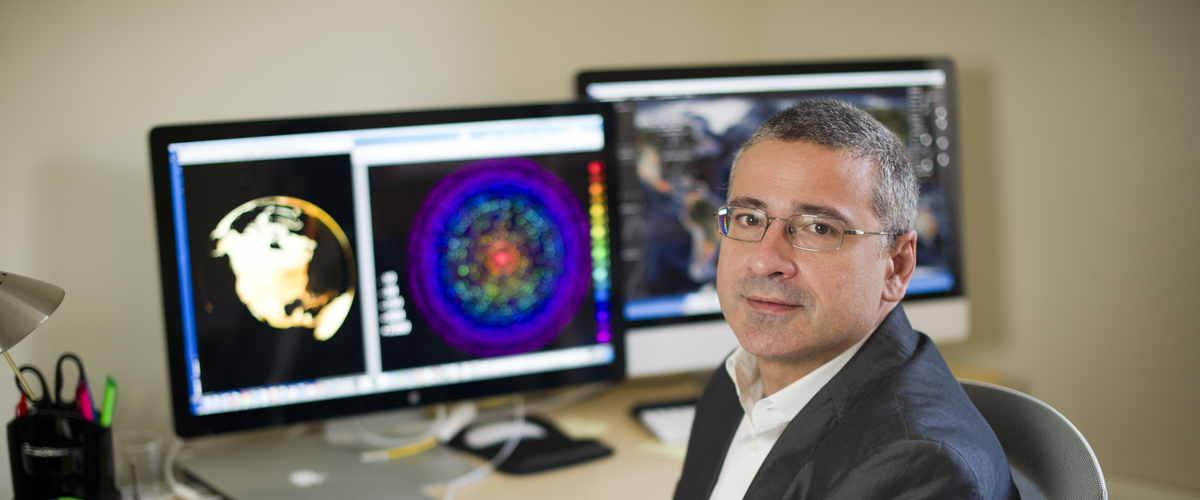by Greg St. Martin
As the global Ebola crisis continues to evolve, each day brings new updates and news on the situation, from health officials investigating a potential new case in the U.S. to government leaders discussing response plans.
Not surprisingly, Twitter has been a primary source for people to follow and discuss the latest Ebola news, but “there have been times when it’s felt like if you’re away from the Internet for three hours, you come back and it’s difficult to understand everything that’s going on,” said Northeastern network scientist Alessandro Vespignani, the Sternberg Family Distinguished Professor of Physics and who holds joint appointments in the College of Science, the College of Computer and Information Science, and the Bouvé College of Health Sciences.
This has motivated Vespignani’s team in Northeastern’s MoBS lab—in collaboration with the Italy-based ISI Foundation, the Institute for Scientific Interchange—to create EbolaTracking, a Web tool that allows the public to follow in real time all the latest news and Twitter discussion on Ebola.
The “situational awareness tool,” as Vespignani calls it, pulls mentions of Ebola and related keywords from Twitter and displays them on an interactive world map. The map groups tweets by location, whether that location is mentioned in the tweet or is from a news outlet in that location. It also filters out the junk and spam tweets.
“EbolaTracking is a Web interface that leverages Twitter data,” he explained. “Twitter is very quick; it picks up on signals right away, so we decided to construct a platform that is able to distill these signals in a meaningful way.”
Vespignani stressed that the tool only tracks news and discussions about Ebola on Twitter based on location; it doesn’t track the virus or predict where it will spread.
However, his team’s ongoing research at the MoBS lab is focused on that. For months now the lab has been tracking the epidemic in West Africa and its potential to spread globally. The team has developed a cutting-edge computational model using Big Data that allows them to visualize the spread of Ebola, a project combines real-world population and human mobility data with elaborate models on disease transmission. The team has used these models to predict the progression of Ebola and is regularly updating its prediction assessments to reflect new trends in the disease’s spread as more information becomes available.
Originally published in news@Northeastern on November 6, 2014

